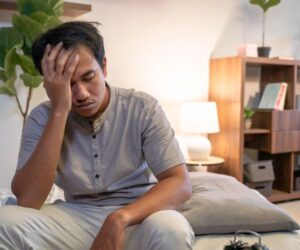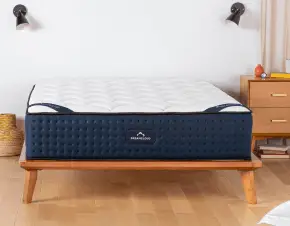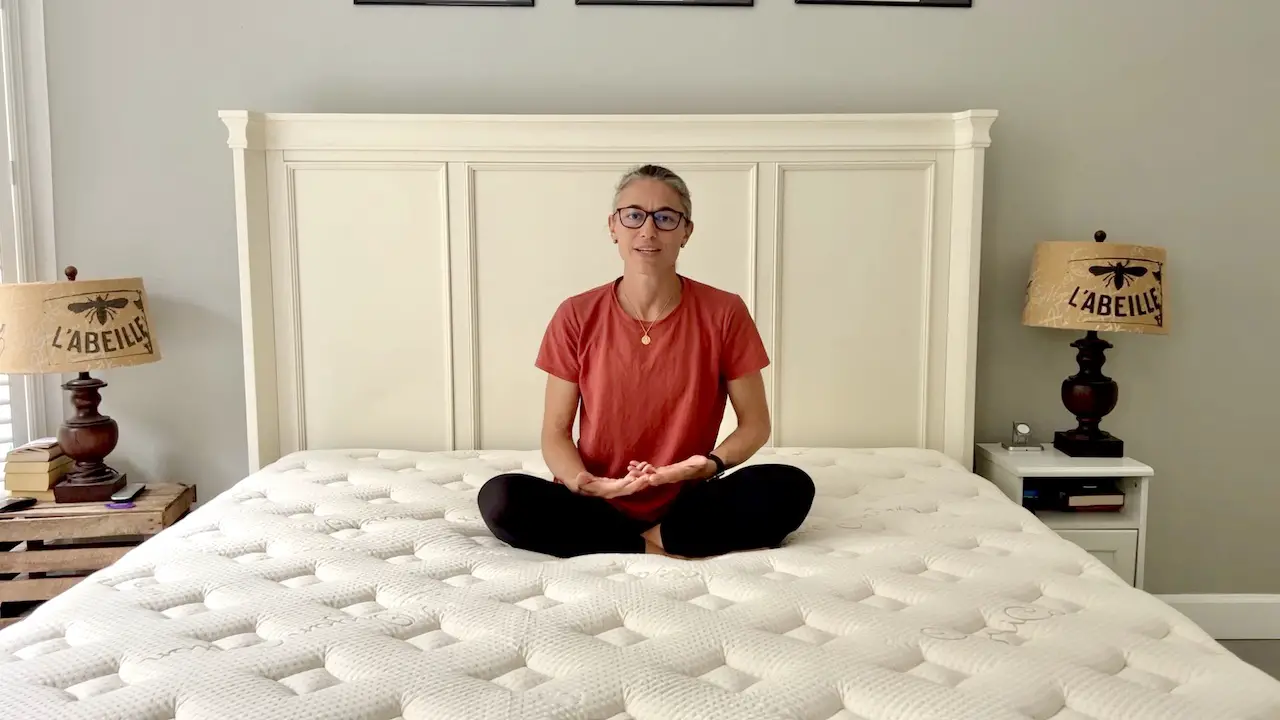WHAT IS THE 3 2 1 0 RULE FOR SLEEP
A Complete Guide
Sleep plays a critical role in our health, mood, and daily performance. Yet, many people struggle with falling asleep on time, waking up rested, and sticking to consistent sleep routines. One simple yet powerful method for improving sleep hygiene is the 3 2 1 0 rule.
But what exactly is the 3 2 1 0 rule for sleep? How does it work? And can it really help you sleep better at night? Let’s take a closer look at the science behind the method, how to use it, and why it might be the easiest bedtime routine you’ve ever tried.
Table of Contents
What Is the 3 2 1 0 Rule?
The 3 2 1 0 rule is a simple bedtime formula designed to help you prepare your mind and body for quality sleep. It gives you a structured evening routine by telling you what to avoid and when. Here’s the breakdown:
3 hours before bed – Stop eating big meals or drinking alcohol.
2 hours before bed – Stop working or engaging in stressful activities.
1 hour before bed – Turn off screens (TV, phone, laptop) to reduce blue light exposure.
0 – The number of times you should hit the snooze button in the morning.
This rule provides an easy-to-follow framework to improve sleep hygiene without overcomplicating your nighttime routine. It can easily be used daily and become an easy reminder as you get ready for bed.
If you do not have a bedtime routine yet, check out our 7-to-10AM bedtime routine for adults to create a nightly routine that works for you.
Why the 3 2 1 0 Rule Works
The success of the 3 2 1 0 rule is rooted in both science and habit formation. Each step directly tackles a common sleep disruptor:
3 Hours Before Bed: No Heavy Meals or Alcohol
Why it matters: Digesting a large meal or processing alcohol interferes with deep sleep stages. It can also trigger acid reflux or bloating, making it harder to fall asleep comfortably. While alcohol feels like it helps you fall asleep, it also leads to more nighttime awakenings, resulting in poor quality of sleep.
What to do instead: If you’re hungry, opt for a light snack like yogurt, a banana, or almonds, and keep in mind what not to eat before bedtime.
2 Hours Before Bed: Stop Working
Why it matters: Late-night emails, studying, or high-stress problem-solving keep your brain alert and raise cortisol levels (the stress hormone). This delays melatonin production, which signals your body it’s time to rest.
What to do instead: Try calming activities like reading, stretching, journaling, or preparing for the next day.
1 Hour Before Bed: Turn Off Screens
Why it matters: Blue light from screens suppresses melatonin production and tricks your brain into thinking it’s still daytime. This can lead to tossing and turning and delays your sleep onset. Additionally, if you wake up at night, refrain from looking at your phone’s screen, as the blue light will trigger awakening.
What to do instead: Switch to analog activities like reading a book, listening to calming music, or practicing mindfulness.
0 Snooze Button Presses
Why it matters: Hitting snooze disrupts sleep cycles and leaves you feeling groggy. Waking up immediately helps set a consistent circadian rhythm and boosts morning energy. We also recommend waking up at the same time every day, weekends included, to help create a routine that is consistent and signals to your brain when is time to fall asleep and wake up.
What to do instead: Place your alarm across the room so you have to get out of bed to turn it off.
The Benefits of Following the 3 2 1 0 Rule
Adopting the 3 2 1 0 rule can transform your sleep quality and daily energy. Some of the top benefits include:
Faster sleep onset – Your body is better prepared for rest.
Improved sleep quality – Less late-night digestion, reduced stress, and lower blue-light exposure improve deep sleep stages.
Morning alertness – Avoiding snooze promotes a healthier wake-up routine.
Consistent circadian rhythm – Following the same steps each night trains your body clock.
Reduced nighttime anxiety – Structured routines signal safety and predictability.
How to Implement the 3 2 1 0 Rule in Real Life
The 3 2 1 0 sleep rule sounds simple, but consistency is key. Here are some practical tips to make it part of your routine:
Set an Evening Alarm
Use a reminder on your phone to signal when to stop eating, working, or using screens.
Prep Your Bedroom
Keep your sleep environment cool (around 65–67°F), dark, and quiet.
Invest in comfortable bedding and a supportive mattress to minimize restlessness.
Build a Wind-Down Routine
Try relaxing rituals like herbal tea, meditation, or a warm shower.
Journaling can also help offload thoughts that might keep you awake.
Stay Consistent
Follow the rule every night—even on weekends—to regulate your body clock.
The 3 2 1 0 Rule and Sleep Hygiene
The 3 2 1 0 rule is more than just a routine—it’s a sleep hygiene strategy. Sleep hygiene refers to the habits and practices that support healthy, restful sleep. By aligning with the rule, you are already covering the major pillars:
Diet timing
Work-life balance
Light exposure
Wake-up consistency
Think of it as a simplified sleep hygiene checklist that is easy to understand, remember, and follow.
Common Challenges With the 3 2 1 0 Rule
Even though the 3 2 1 0 sleep method is simple, many people face challenges at first. Here are a few common roadblocks and how to overcome them:
You Work Late Nights
Fix: If work spills past bedtime, at least shut down 30 minutes before bed and do a relaxation activity such as meditation, light yoga, reading, drinking a warm herbal tea.
You’re Addicted to Screens
Fix: Use blue light–blocking glasses or switch your devices to night mode if you can’t disconnect completely.
You Snack Late
Fix: Choose light, sleep-friendly snacks like cherries or whole-grain crackers instead of heavy meals.
You Can’t Resist Snoozing
Fix: Try a sunrise alarm clock that wakes you gradually with light instead of harsh sounds.
Does the 3 2 1 0 Rule Work for Everyone?
The 3 2 1 0 rule is highly effective for most people when consistency is applied, but results vary. Factors like medical conditions, insomnia, or shift work can affect sleep regardless of bedtime habits. If you follow the rule but still struggle with sleep, consider:
Talking to a sleep specialist
Checking for conditions like sleep apnea or restless legs
Evaluating your mattress and bedding for comfort and support
Why You Should Try the 3 2 1 0 Rule Tonight
The 3 2 1 0 rule is a simple yet powerful strategy to improve sleep. By cutting off food, work, and screen time at structured intervals—and committing to waking up without snooze—you’re setting your body and mind up for restorative rest.
Unlike complicated sleep programs, this rule is easy to remember and doesn’t require expensive tools or apps. All it takes is consistency and commitment.
If you have been looking for a straightforward way to improve your sleep hygiene, the 3 2 1 0 sleep rule may be the habit that finally transforms your nights—and your mornings.
References
- National Library of Medicine. (2022). The influence of blue light on sleep, performance and wellbeing in young adults: A systematic review. Retrieved from https://pmc.ncbi.nlm.nih.gov/articles/PMC9424753/
- Science Direct. The effect of alcohol on subsequent sleep in healthy adults: A systematic review and meta-analysis. Retrieved from https://www.sciencedirect.com/science/article/pii/S1087079224001345
- Psychiatrist.com. (2023). Why Sleep Consistency May Be More Important Than Duration. Retrieved from https://www.psychiatrist.com/news/why-sleep-consistency-may-be-more-important-than-duration/
FAQ
Most frequent questions and answers
It’s a bedtime routine formula: no eating or alcohol 3 hours before bed, no work 2 hours before bed, no screens 1 hour before bed, and 0 snooze button presses in the morning.
Yes. It reduces late-night digestion, stress, and blue light exposure, while promoting consistent wake-up habits.
Absolutely. If your schedule doesn’t allow strict adherence, try shortened versions like 2-1-0 or adjusting time frames.
Anyone struggling with falling asleep, staying asleep, or waking up energized can benefit from this method.
No. While effective for sleep hygiene, it won’t cure underlying sleep disorders. Always consult a healthcare professional if problems persist.
Share this deal with a friend!

Laura Georgieff
Laura is a mother of three who did not sleep through the night for the first 5.5 years of her kids' lives. She is passionate about sleep quality and loves sharing her experience and knowledge of all thing bedding! It is her mission to help you make the best decisions when it comes to sleep and help you get the best deal on the market!
What is the 3 2 1 0 rule for sleep?
It’s a bedtime routine formula: no eating or alcohol 3 hours before bed, no work 2 hours before bed, no screens 1 hour before bed, and 0 snooze button presses in the morning.
Does the 3 2 1 0 rule really improve sleep?
Yes. It reduces late-night digestion, stress, and blue light exposure, while promoting consistent wake-up habits.
Can I modify the 3 2 1 0 rule?
Absolutely. If your schedule doesn’t allow strict adherence, try shortened versions like 2-1-0 or adjusting time frames.
Who should try the 3 2 1 0 rule?
Anyone struggling with falling asleep, staying asleep, or waking up energized can benefit from this method.
Is the 3 2 1 0 rule a replacement for medical treatment?
No. While effective for sleep hygiene, it won’t cure underlying sleep disorders. Always consult a healthcare professional if problems persist.






